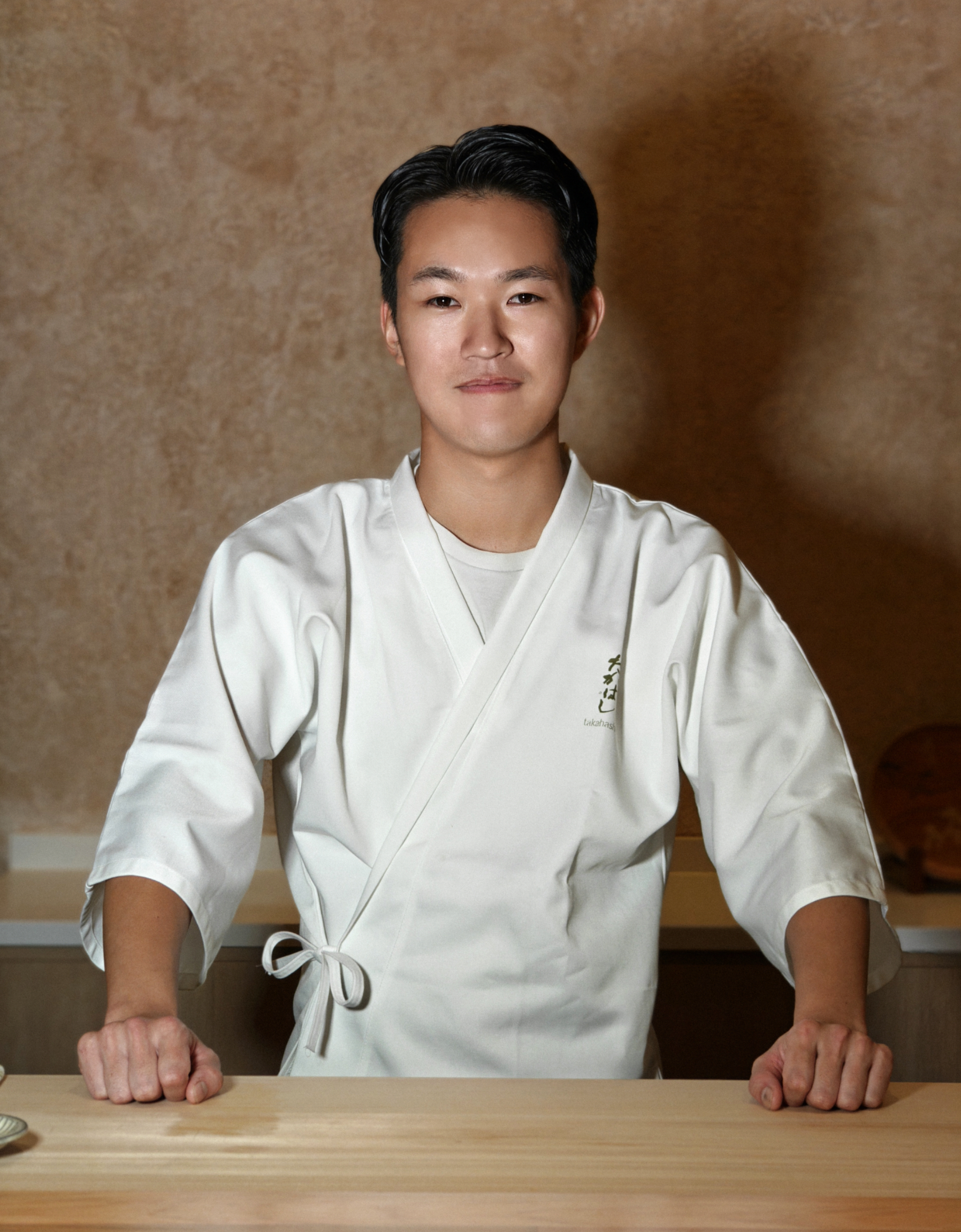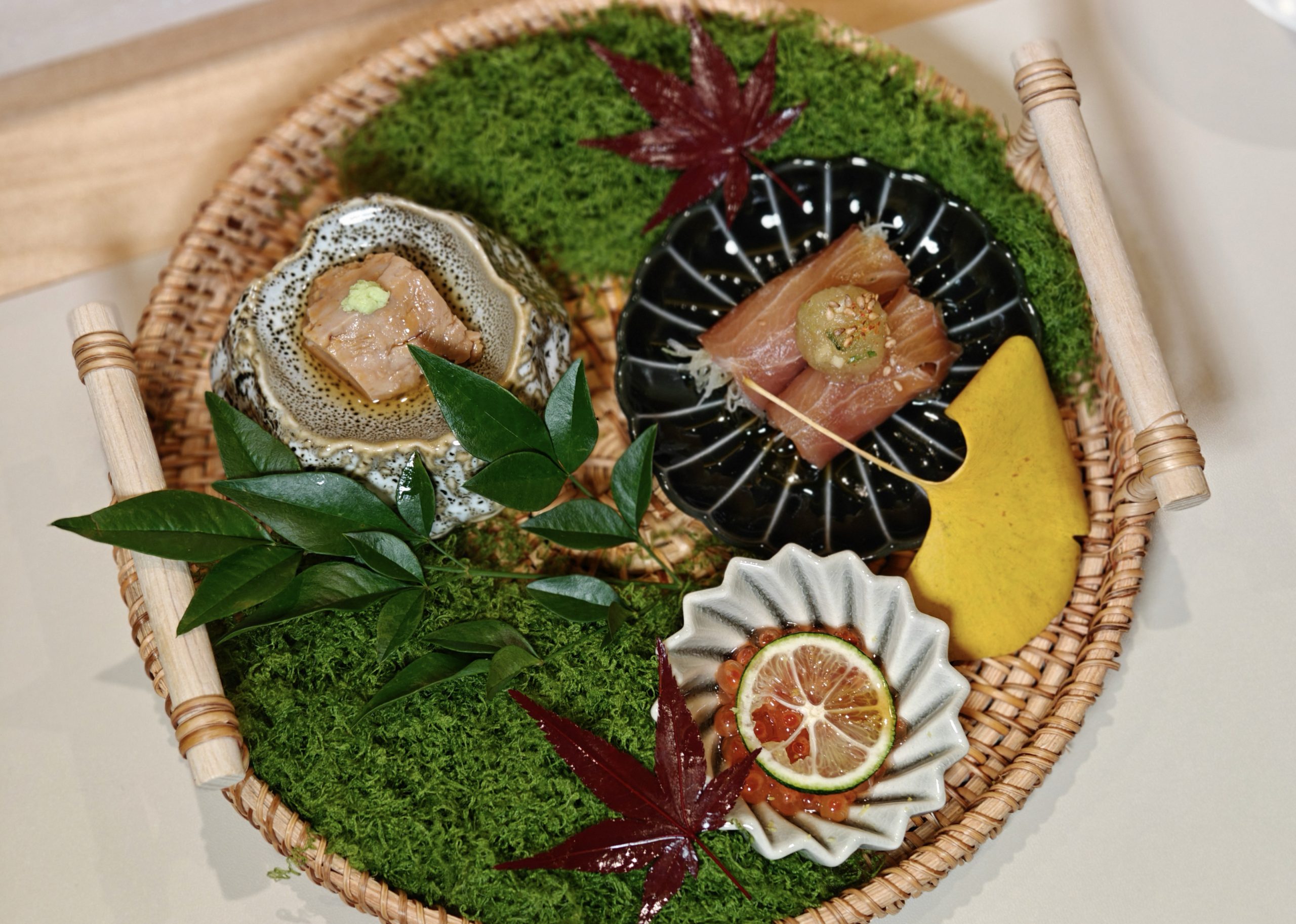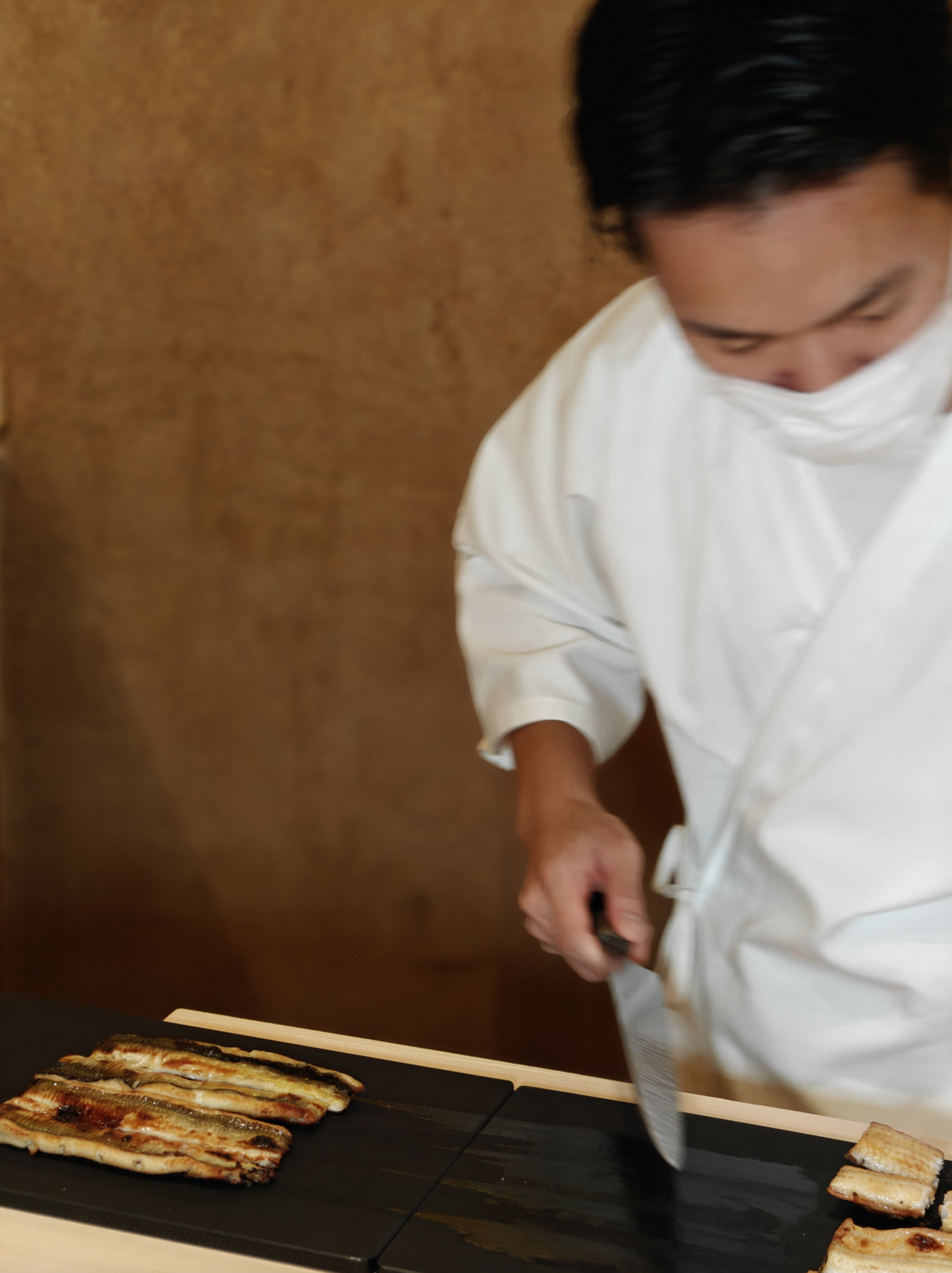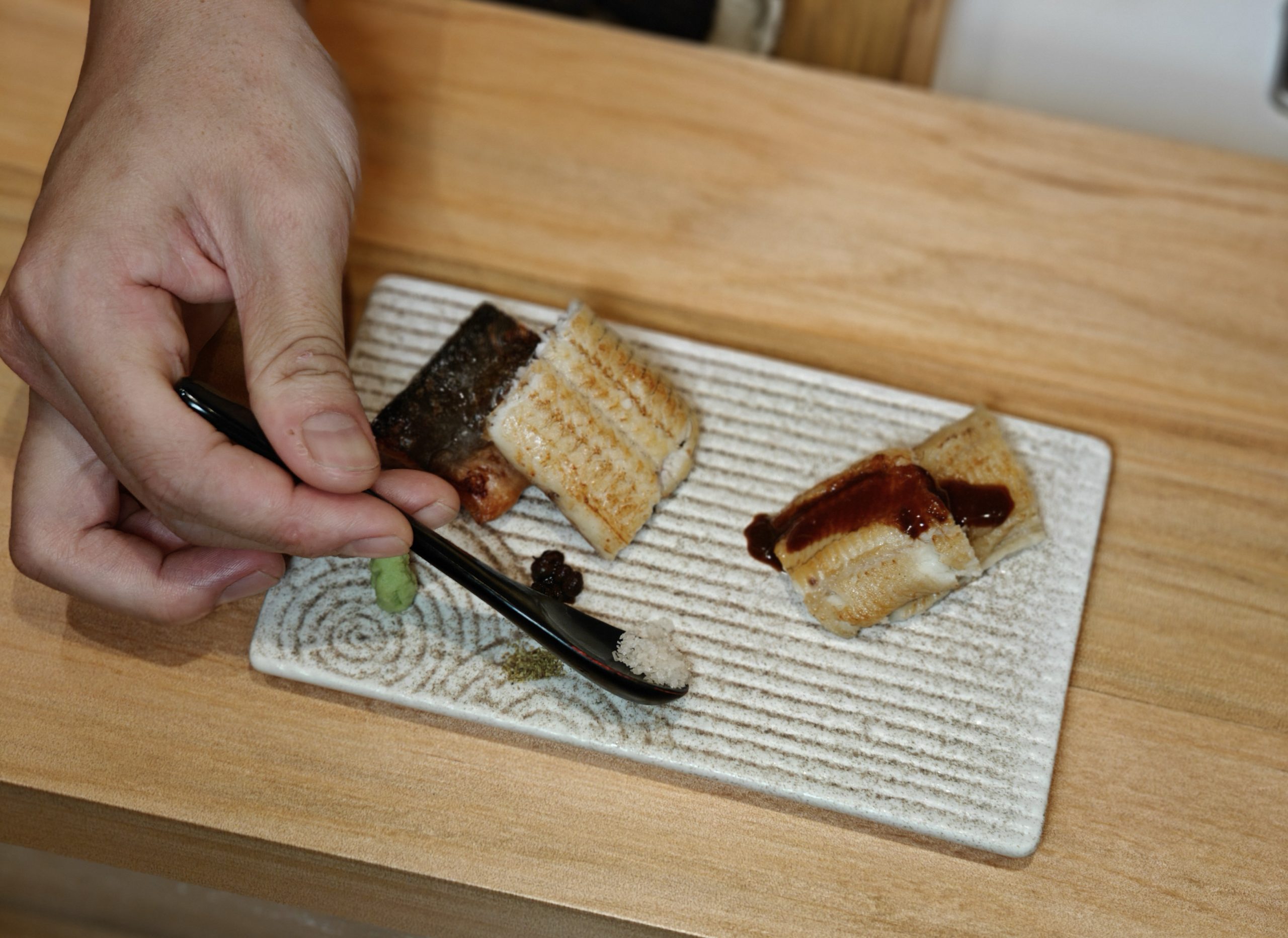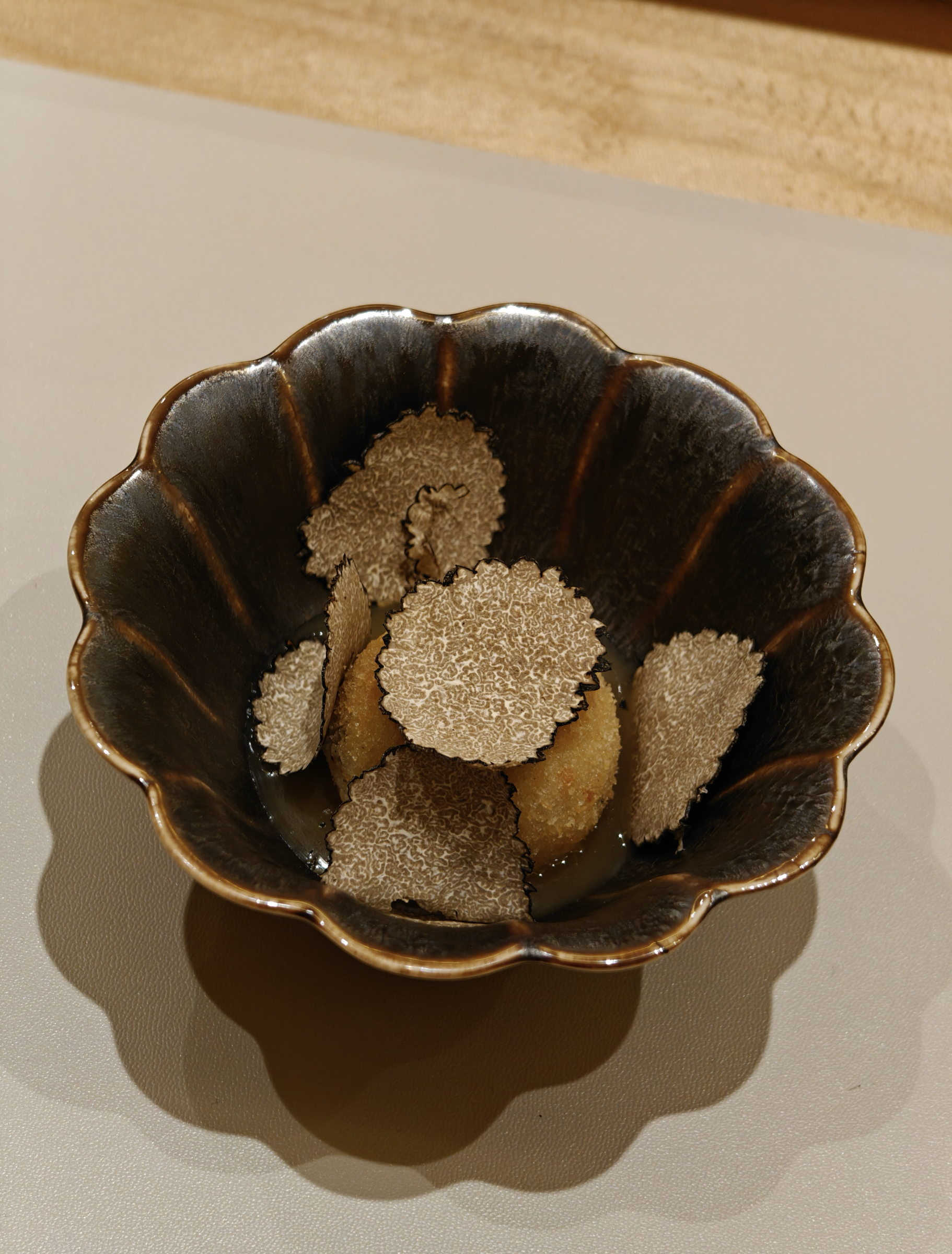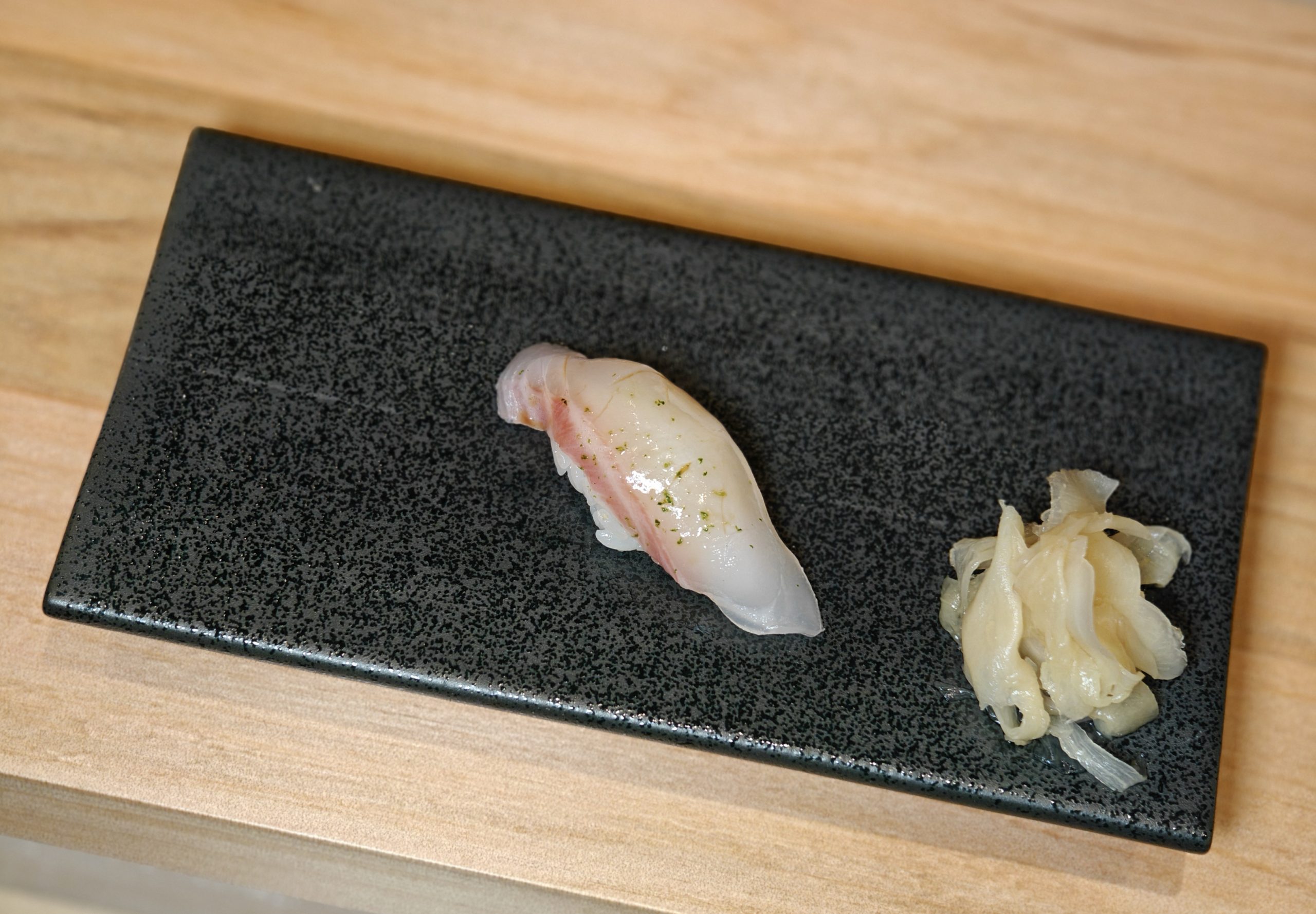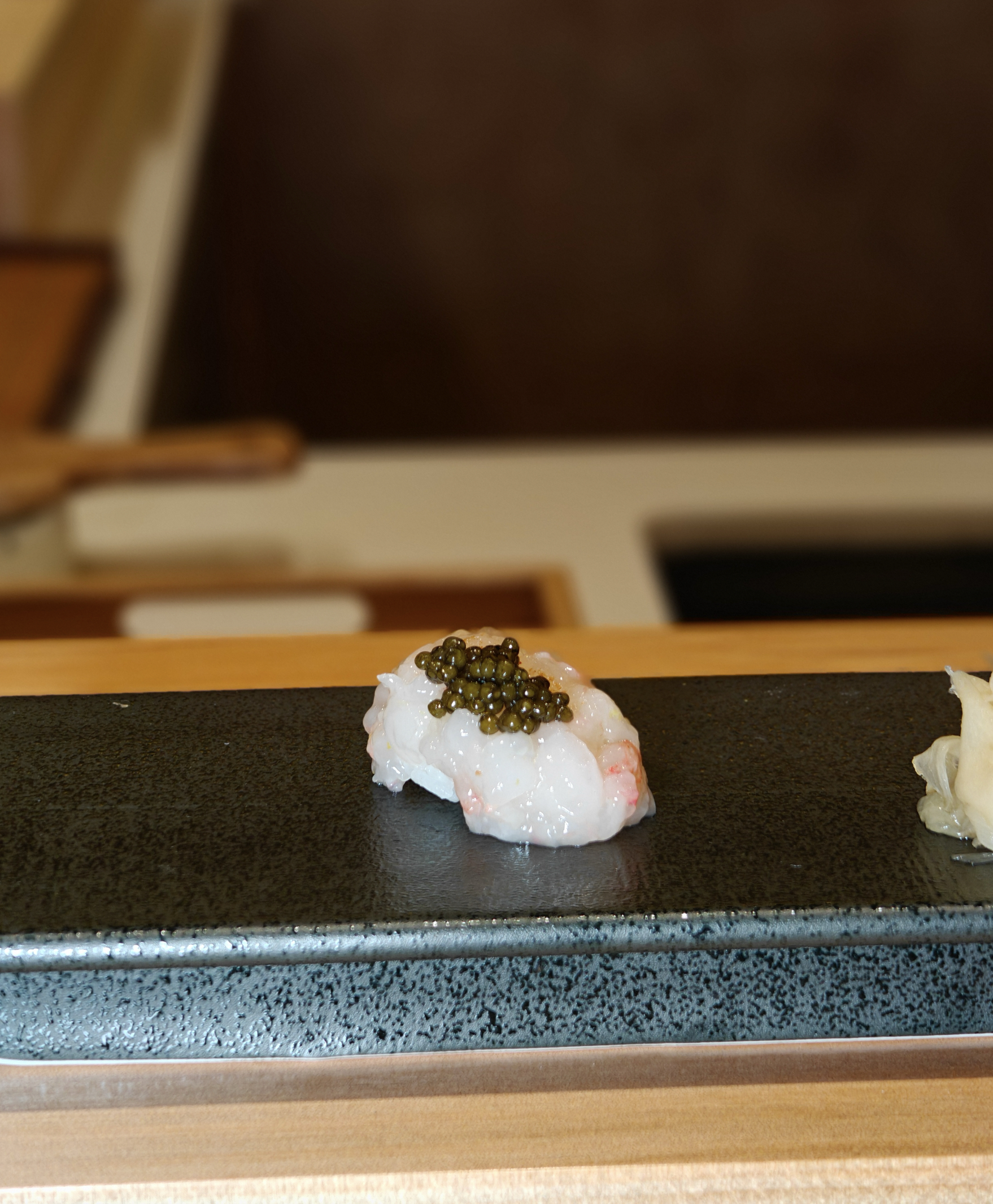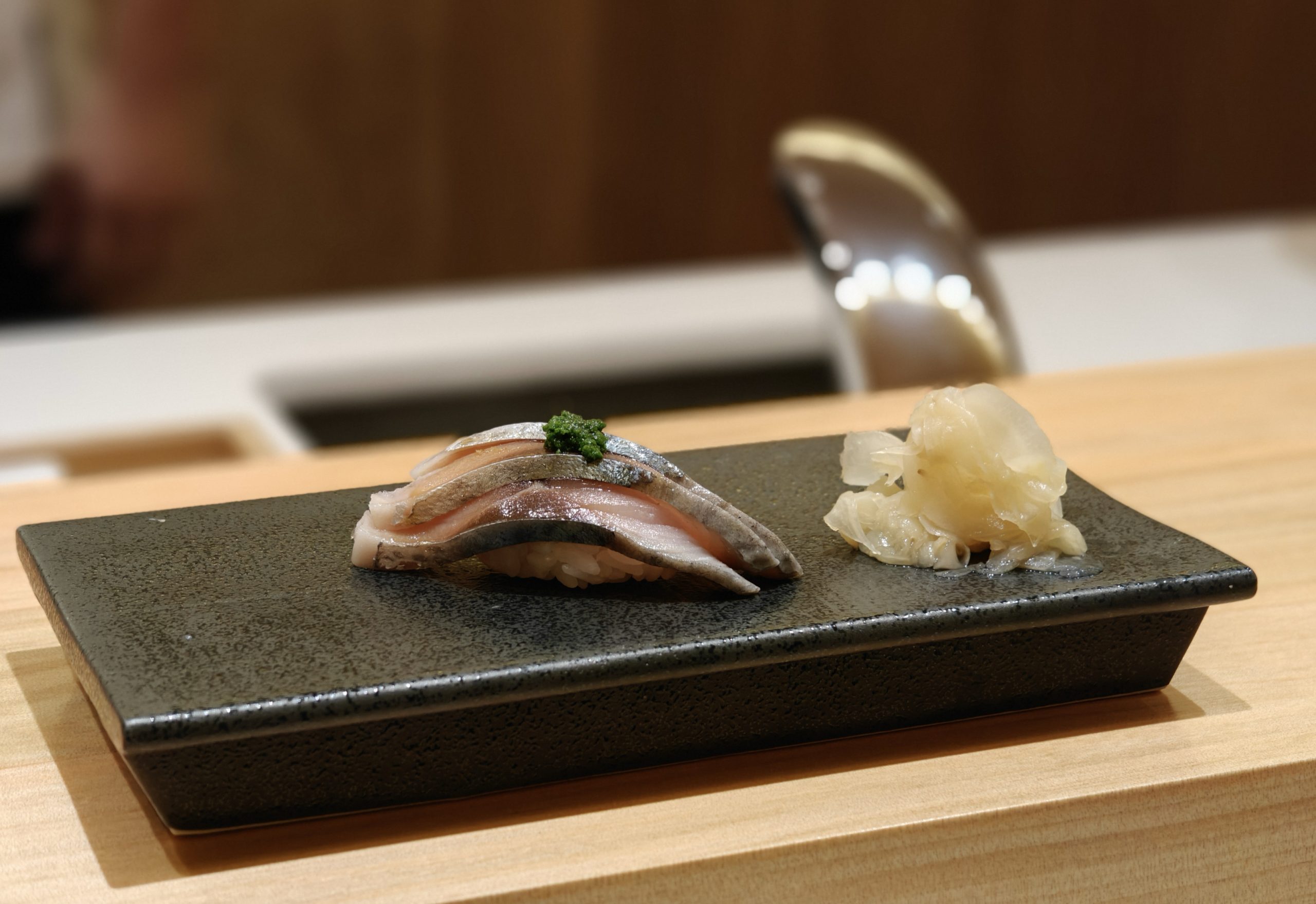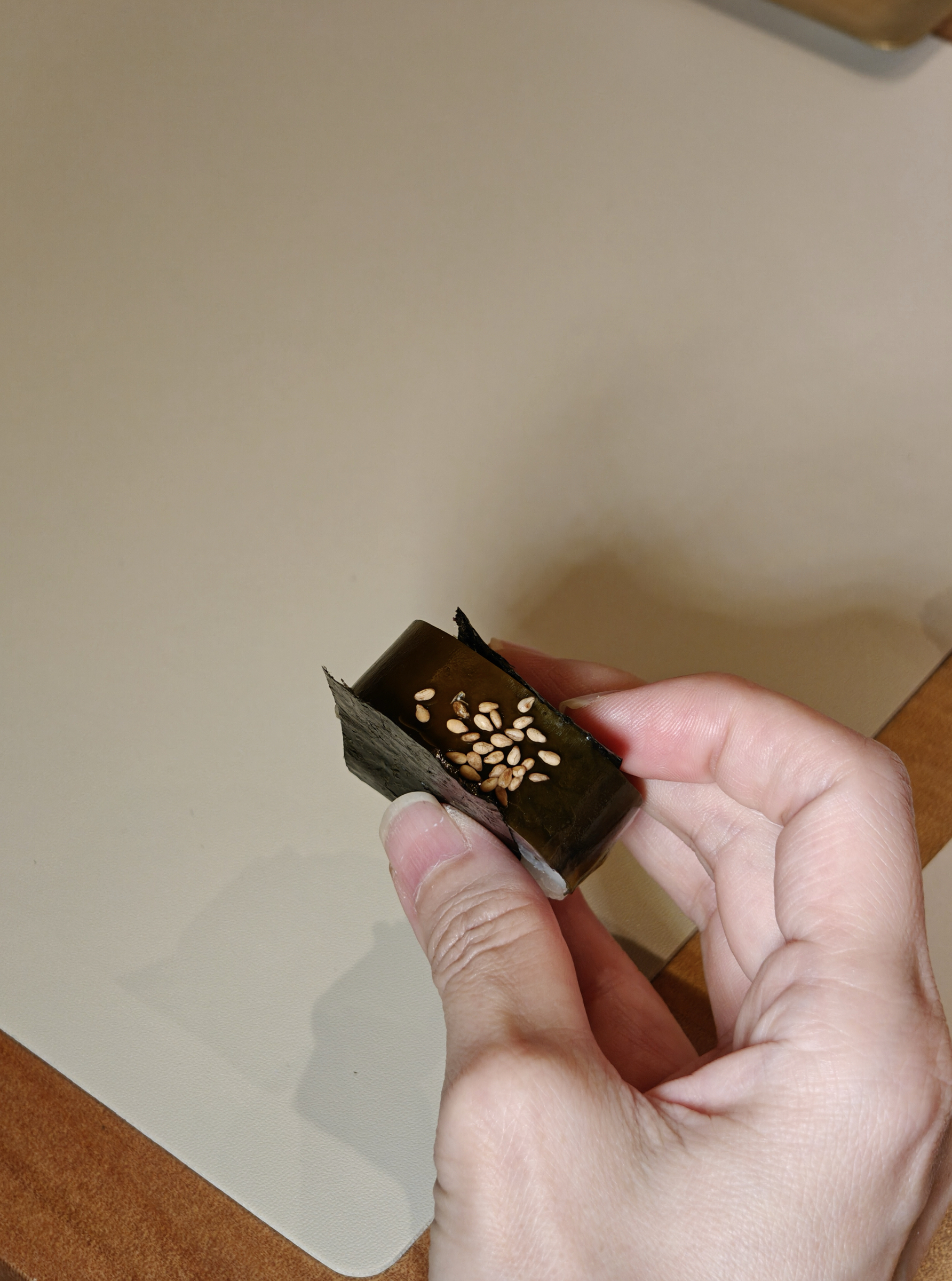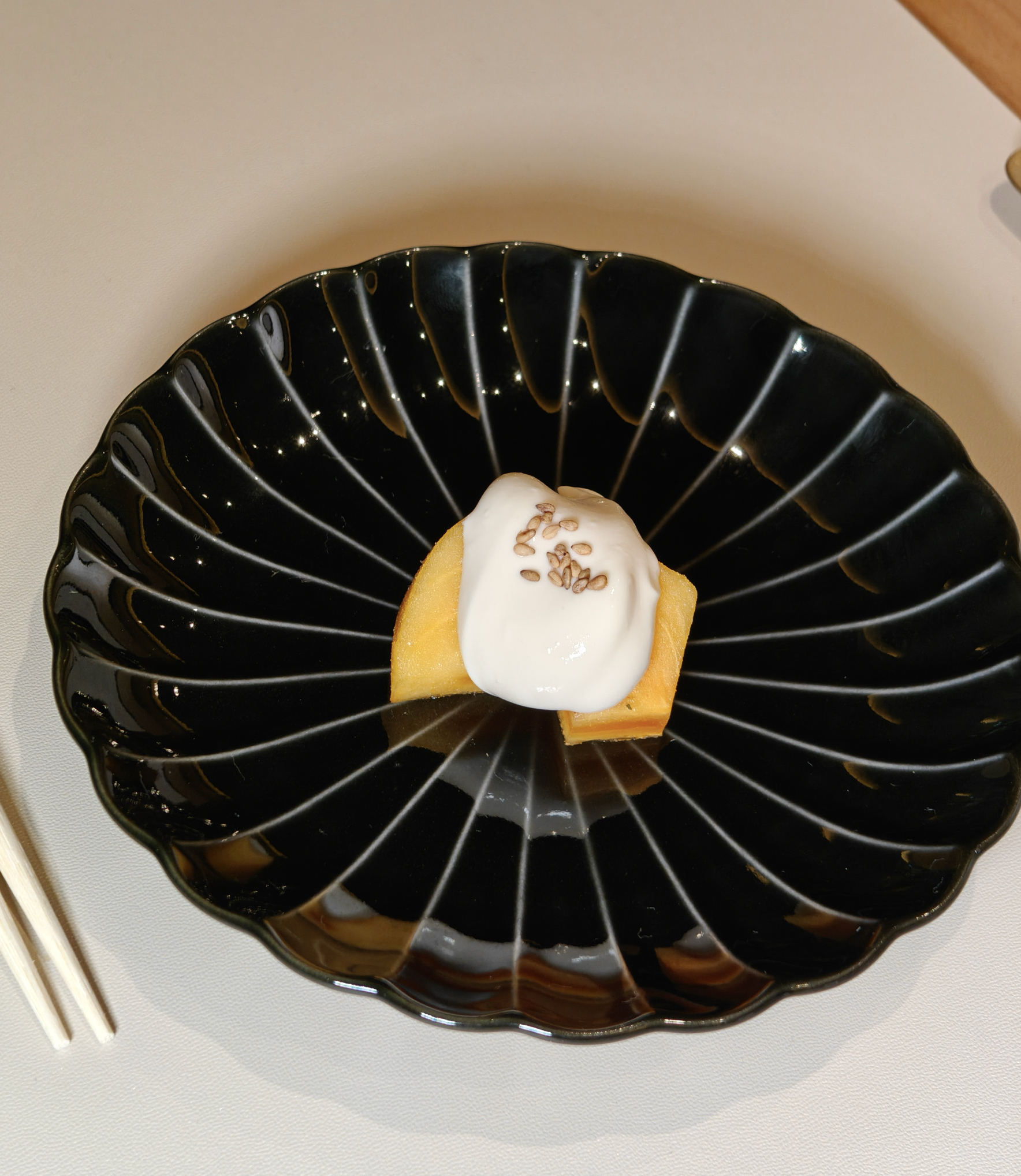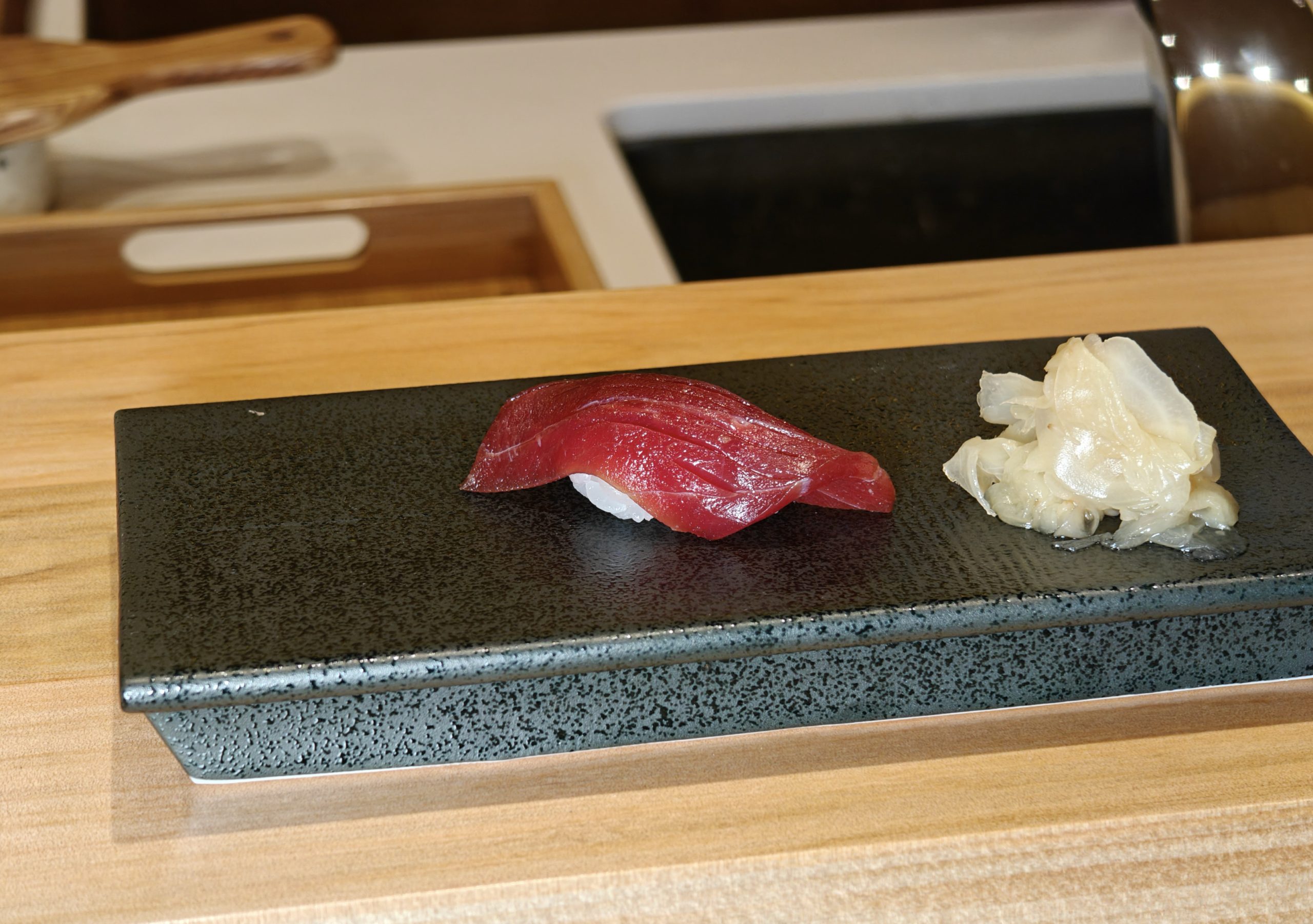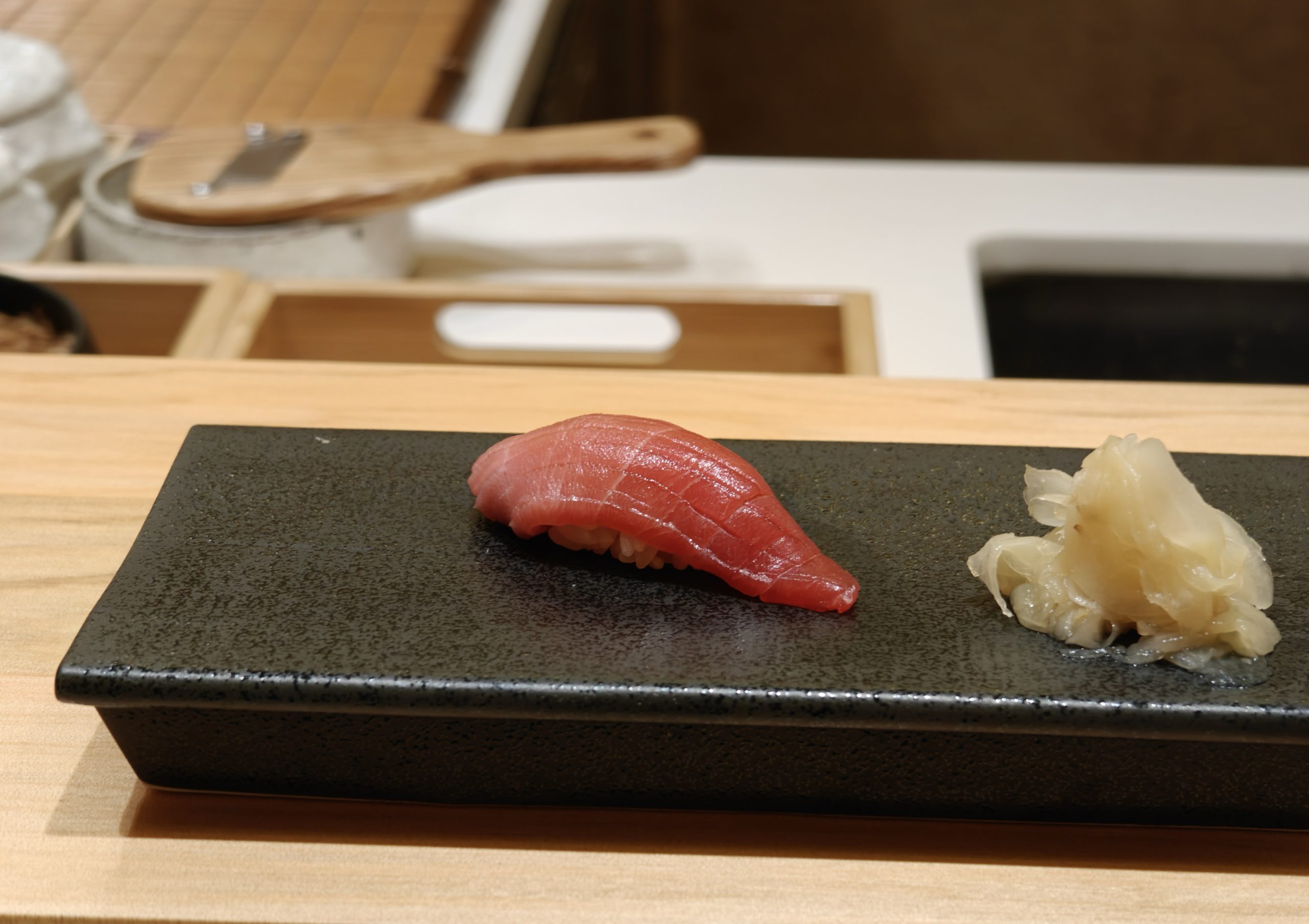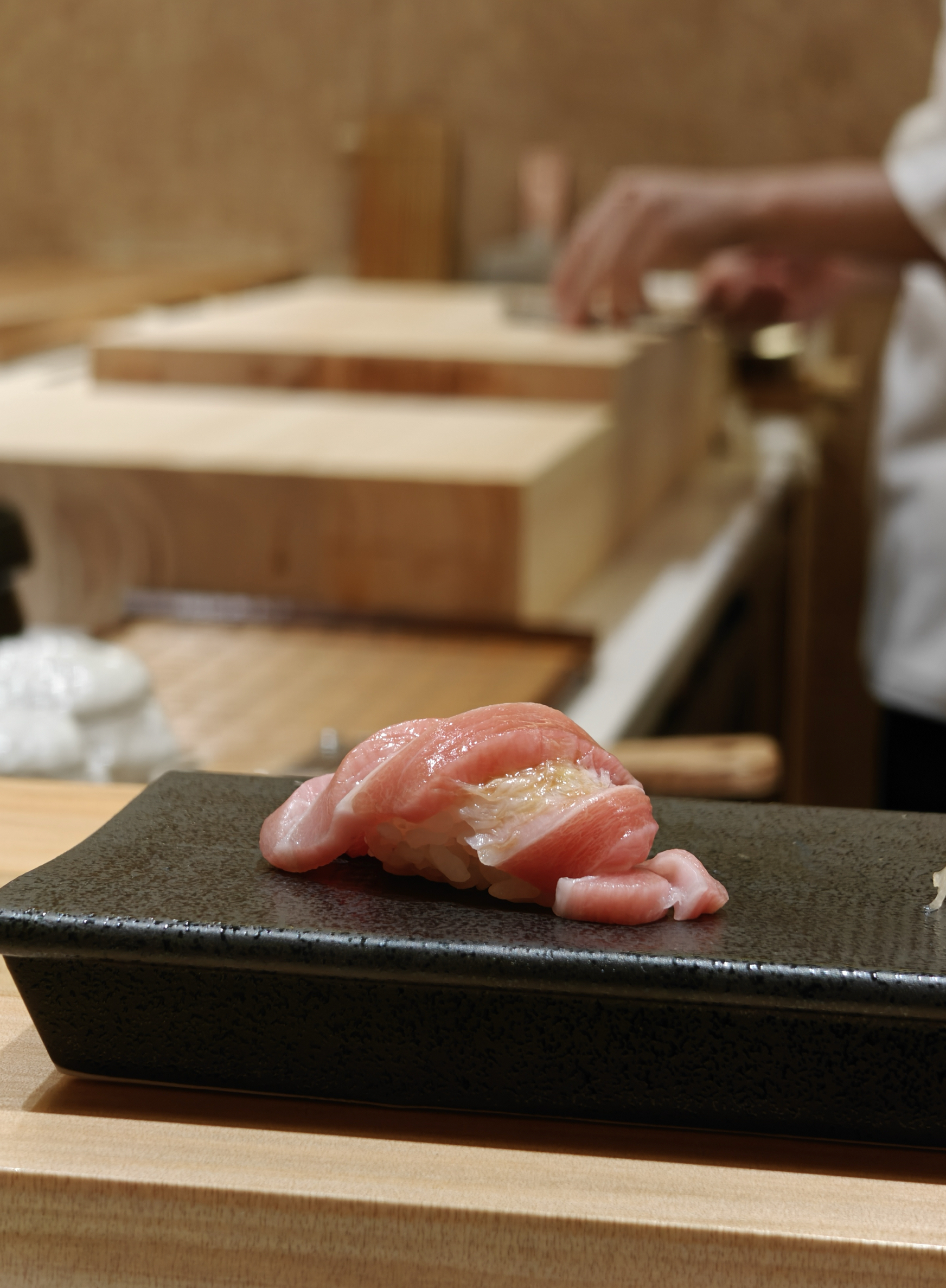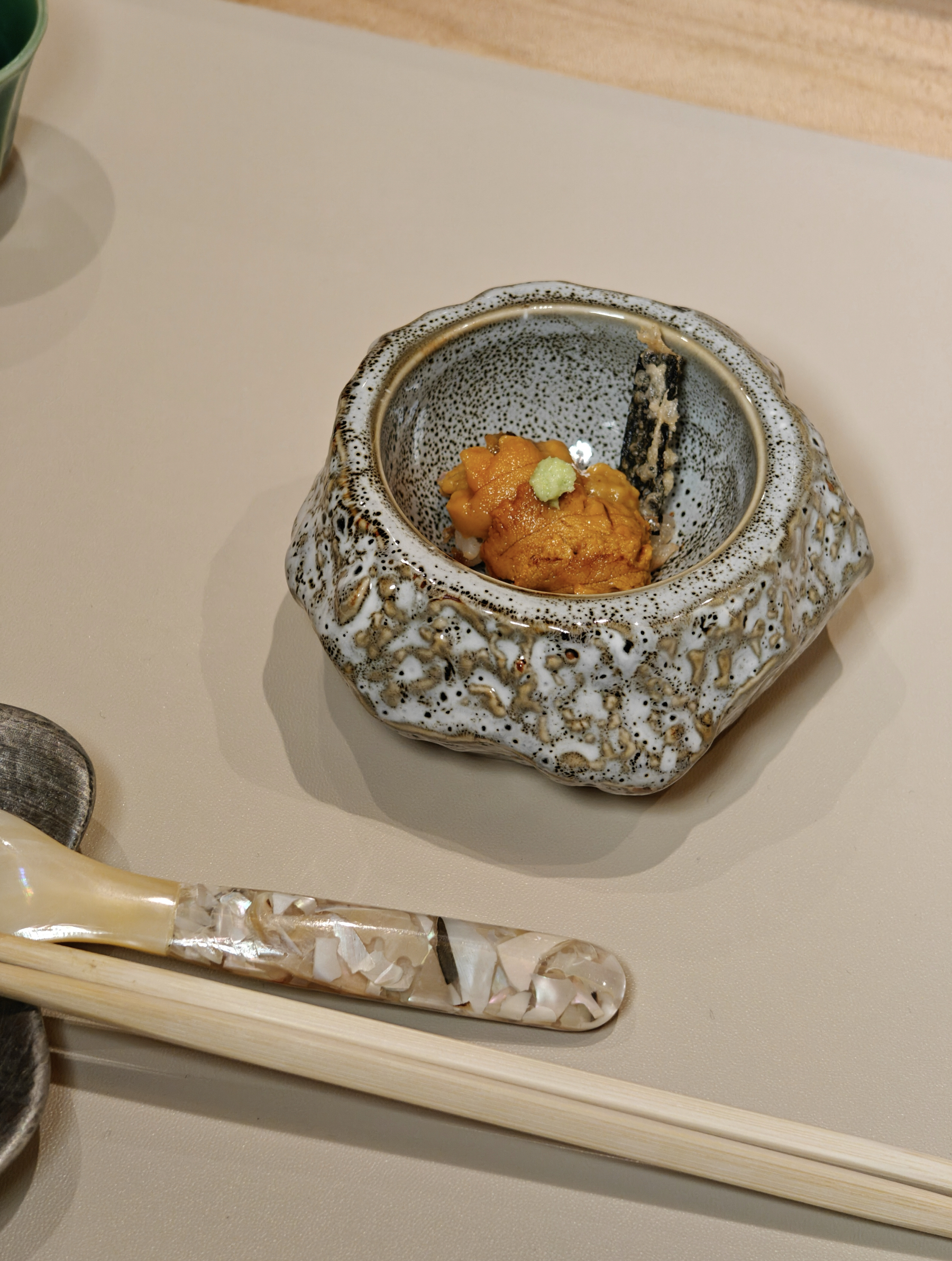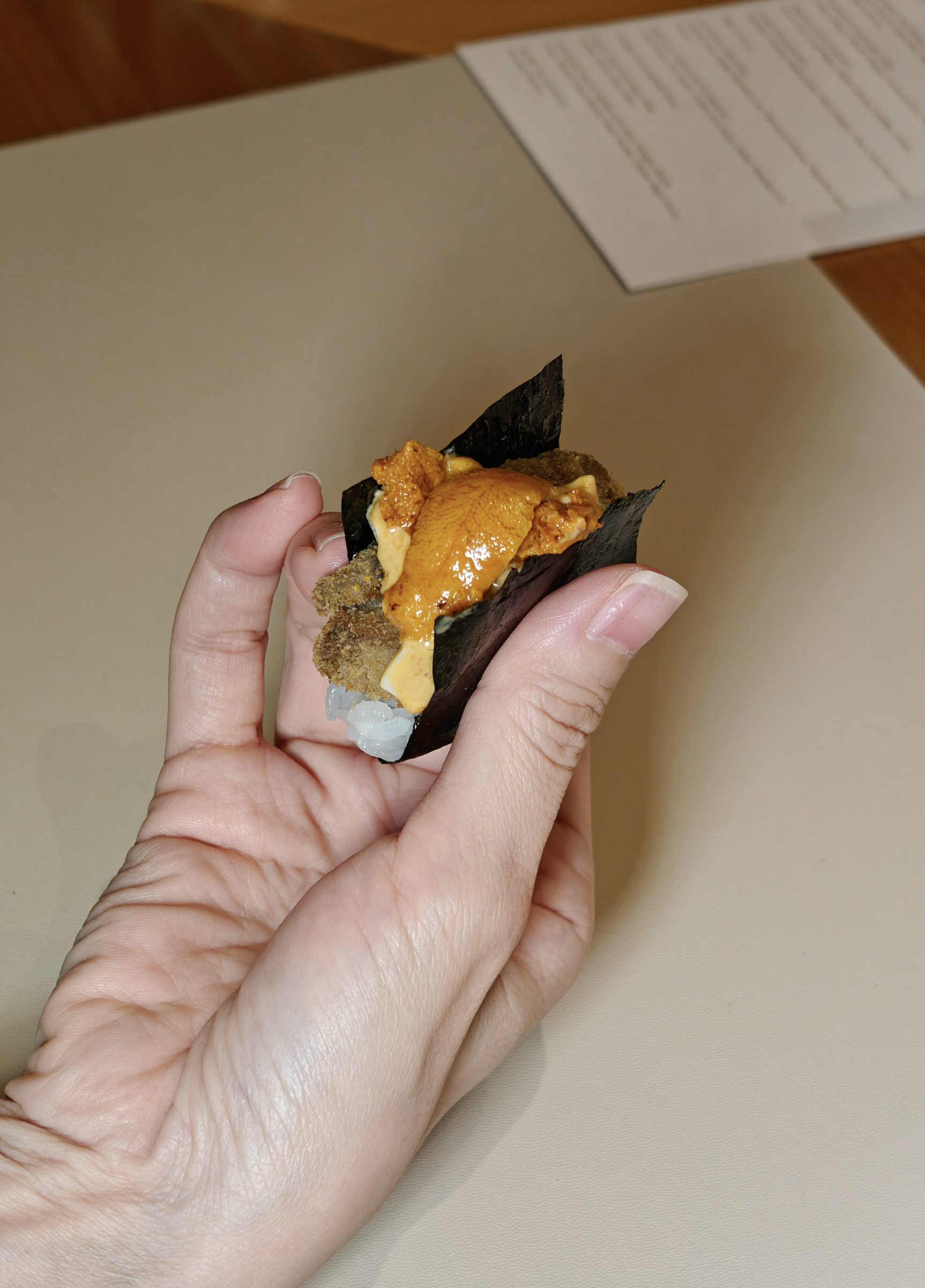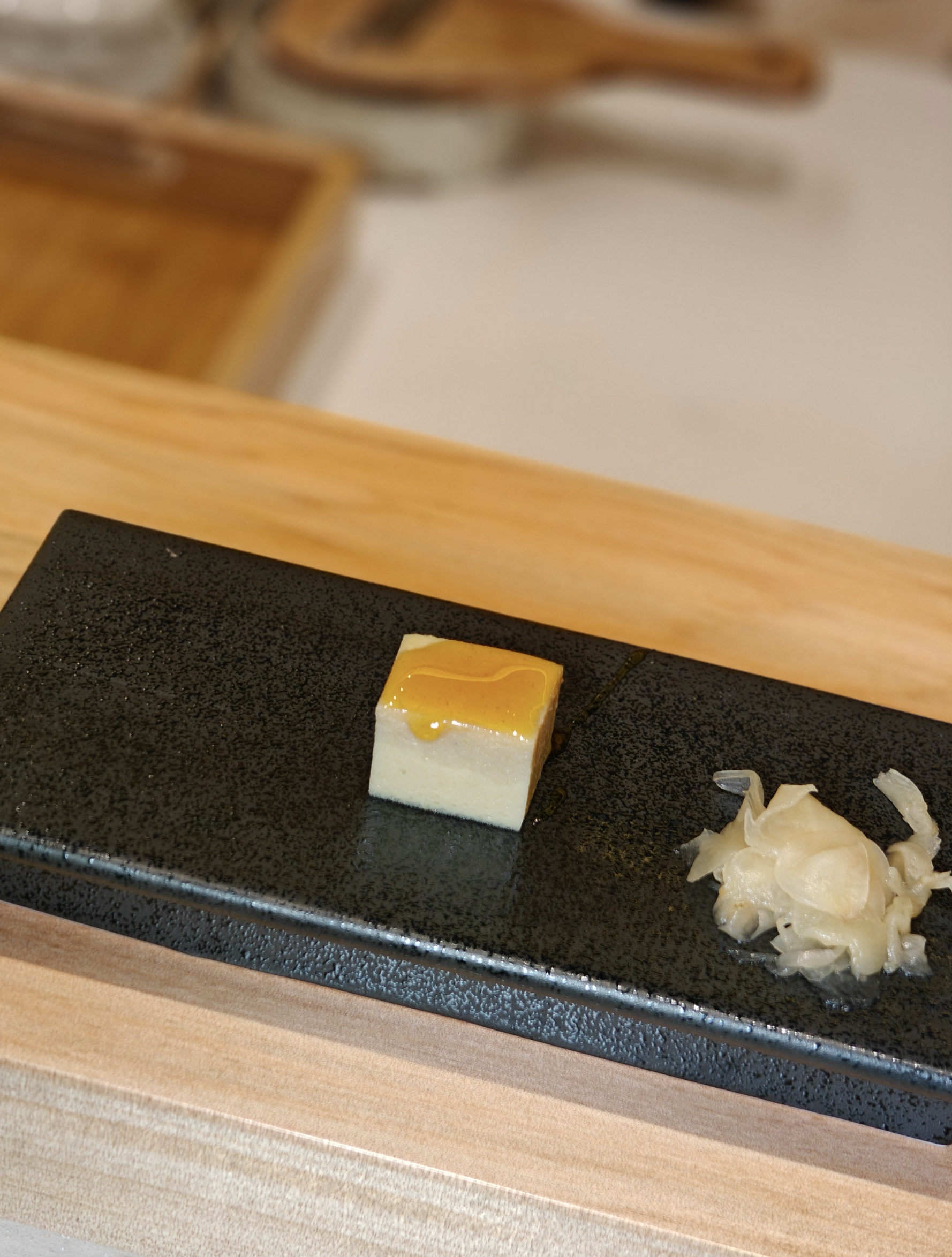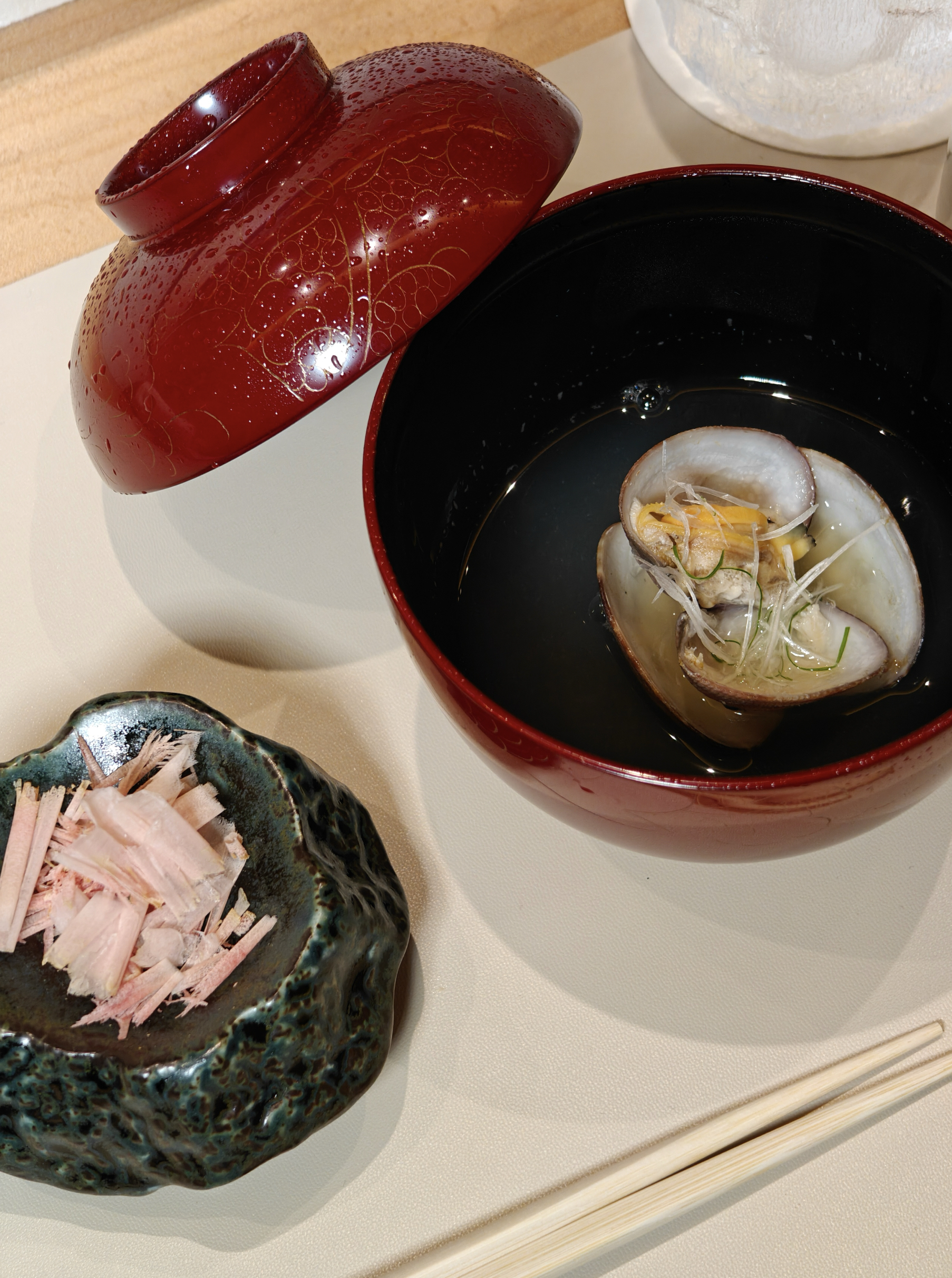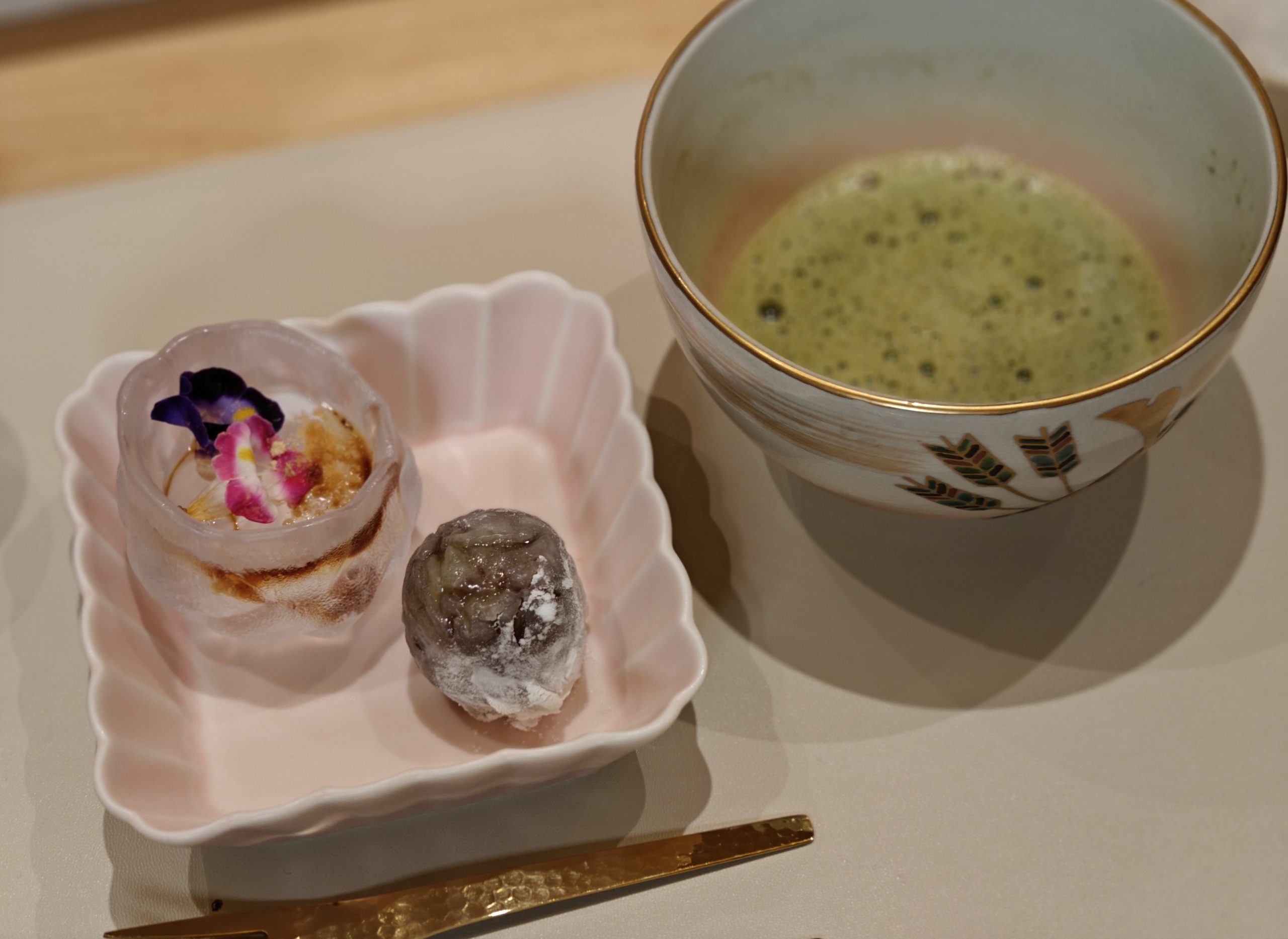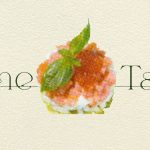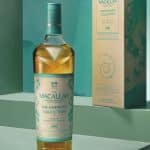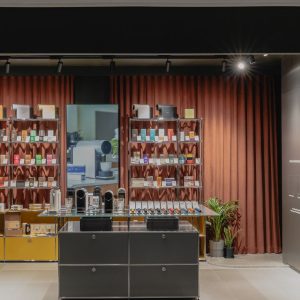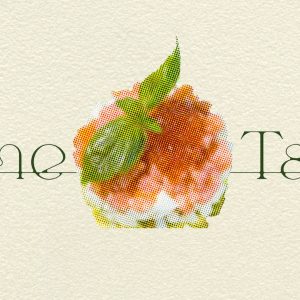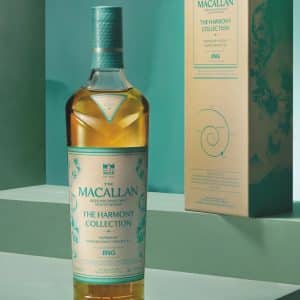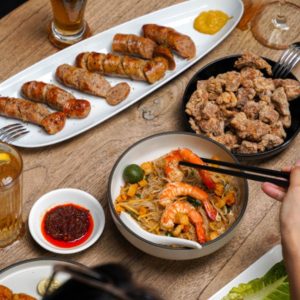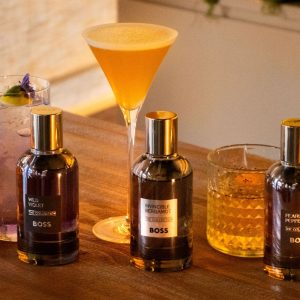Sushi Takahashi of Tokyo, an omakase restaurant in Ginza, is known for their six-month waitlists and of course their sushi. Their first location outside of Japan lands in Singapore and it’s helmed by Chef Rinto Sasagawa, who was the protégé of Chef Jun Takahashi for eight years.
Above: Chef Rinto Sasagawa of Takahashi Singapore.
This 25-year-old relocated to Singapore and his purpose is to bring the refined elegance of omakase dining to our shores. No doubt this chef seems young for his role, he’s a master of the art of sushi and kappa-style kaiseiki. The dishes he hopes to introduce will incorporate time-honoured traditions of Japan and meld it to local tastebuds.
We tried the Shoshu Menu ($320++), which includes six kinds of nigiri and nine dishes (our tasting set included two additional nigiri). Read on for our review of the meal.
Karesansui Zen Garden Platter
Ikura. Dashi & Yuzu Zest
Above: Karesansui Zen Garden Platter.
The Garden Plater is very pretty and consists of three dishes. The first was a pretty straightforward ikura. You can’t go wrong with ikura unless it’s not fresh, but this one was. The Buri with Radish Paste and Chilli Pepper is a fatty yellow tail. It was very fresh, refreshing and a good appetiser to open up the appetite. Lastly, there’s the Marinated Aged Ankimo. This was yummy. A good small portion of tasty liver to leave you wanting more.
Competition between 2 Eels
Unagi, Anago, Sansho Pepper. Seaweed Salt. Wasabi. Pickied Sansho
Above: Chef Rinto Sasagawa preparing the two types of eel side by side.
I love that they put the salt and pepper on the side. The unagi is delightful. Skin was crisp and had a lovely barbecue flavour. The anago was soft, which this meat usually is, but I’m not a fan of its texture. Like the unagi, this was grilled. I would have preferred to have it grilled longer.
Above: Unagi and Anago.
Signature Crab Croquette
Snow Crab. Crab Bisque. Italian Autumn Truffles. Cream
Above: signature crab croquette.
I’ve not eaten a crab croquette prepared in this manner before and this felt cosy and warm, like comfort food. It was surprisingly under-salted, which I suppose makes it not so jelak considering this is a meaty, gooey, dish with a rich texture.
Scallop Chawanmushi
Hokkaido Scallop. Scallop Dashi. Black Pepper. Yuzu. Lotus Root Crisp
Above: scallop chawanmushi.
I love chawanmushi but unfortunately not this one. It was gooey (like the precious dish) and didn’t have the familiar steamed egg texture that I was expecting. But I can understand what the chef is trying to do with this dish and introduce a new way of presenting it.
Nigiri Course
Ishidai • Stone Perch (Mikawa Aichi Prefecture)
Finished with Yuzu & Moshio
Above: ishidai.
Oooooo, this fish is chewy. The hint of yuzu comes out immediately. Meaty and filling, so good if you’re hungry.
Amaebi • Sweet Shrimp
served with Osetra Caviar & Moshio
Above: amaebi.
This one I really liked. The powdered moshio gives this sushi another dimension of flavour. Very tasty and well done.
Saba • Mackerel (Mikawa Aichi Prefecture)
finished with Ginger & Spring Onion
Above: saba.
This recipe is a favourite with all Asians. Onion and ginger obviously go well together and on a familiar fish like mackerel, this suits most Singaporean tastebuds.
Menuke • Deep Sea Rock Fish (Hokkaido)
Charcoal torched with ginger
While chef was preparing this we could smell the charcoal burning and it smelt delicious. This fish was introduced to us as a very rare fish, and when aburi-ed, it brings out the oils and has a very rich taste. There was some kick to the ginger, and this fish actually tasted new to me. A bit fishy, but interesting. I was so happy eating this sushi, I forgot to photograph it. It was that good.
Nishin • Herring (Hokkaido) with Kombu. Sesame & Nori
Above: nishin.
This was refreshing and different from the usual sushi. It’s both sweet and sour, with a crunch to it. The seaweed was nicely toasted.
Palate Cleanser
Japanese Persimmons with Cream Cheese Tofu Sauce
Above: japanese persimmons with cream cheese tofu sauce.
This is what the chef calls a short break before the tunas. I don’t personally like persimmon but I liked this one. Japanese fruits are always on a different level.
Akami Zuke • Marinated Blue Fin Tuna
Hokkaido Hunka Bay
Above: akami zuke.
Nice. Familiar, comforting flavours. Tuna always ticks the right boxes but this one is a precursor to two more tuna sushis.
Chutoro • Medium Fatty Blue Fin Tuna
Hokkaido Hunka Bay
Above: chutoro.
Nice and fatty. But wait for it.
Ootoro • Fatty Tuna
Hokkaldo Hunka Bay
Above: ootoro.
This is the fattiest bit. It melts in the mouth and meets expectations. This trio of tuna was such a good idea. It gives the diner the opportunity to discover which part of the tuna you like best, so you could perhaps order it ala carte in the future.
Uni Ankimo Rice Bowl
Ankimo Rice. Rishiri Murasaki Uni. Marinated Ankimo. Narazuke Aged Gourd
Above: uni ankimo rice bowl.
I really liked this dish. Though it was small, it was very tasty. The uni was fresh and the seaweed tempura was nicely crisped. Delicious and I could eat this again.
Signature Awabi with Uni Handroll
Awabi Katsu, Uni Tartar. Awabi Liver Sauce, Rishiri Murasaki Uni
Above: signature awabi with uni handroll.
This handroll was quite different from the usual handroll. The abalone being made into a katsu was an interesting choice, and it was very meaty. Too meaty for my liking but I’m sure lots of abalone fans will like this.
Tamago with Caramel Sauce
Above: tamago with caramel sauce.
My plus one told me that every restaurant does their tamago differently so I shouldn’t ever dismiss this egg dish. At Takahashi Singapore, the caramel sauce turned this into a sweet dessert that wasn’t too filling and was a nice end to the savoury meal.
Bonito Soup with Asari Clam
Ichiban Dashi. Asari Clam
Above: bonito soup with asari clam.
The bonito is aged three years and it forms the base of this soup. And it was one of the highlights of the meal. I could hear other diners going “mmmm” while drinking it and when I tried it myself, I could understand why. It is very pang; a good warm end to the meal.
Homemade Muscat Daifuku with Mizu Shingen Mochi
Azuki. Muscat Grape Mochi | Bean Powder, Brown Sugar Syrup
Matcha Tea Ceremony
Shizuoka Matcha
Above: dessert and matcha tea.
I believe that desserts shouldn’t be overly complicated, but they should delight. I was delighted with the muscat grape inside the ball, plus the pairing with the matcha tea that was freshly whisked.
The meal left us full, but not bloated. There were lots of dishes that we liked, and we would recommend this restaurant for anniversaries, birthdays, and definitely omakase fans. It’s an intimate setting with only 12 seats at the counter, and a private room that can house an additional 8 — which makes it perfect for business luncheons too (there’s a lunch Koyo Menu at $180++ with eight kinds of nigiri and six dishes).
Takahashi Singapore is located at 4 Mohamed sultan road, and is open Mon-Sun 12pm-3pm and 7pm-10.30pm, closed on Tuesdays. For reservations, you can call +65 8877 0501 or email info@takahashi.com.sg. Visit their website for more at www.takahashi.sg.


